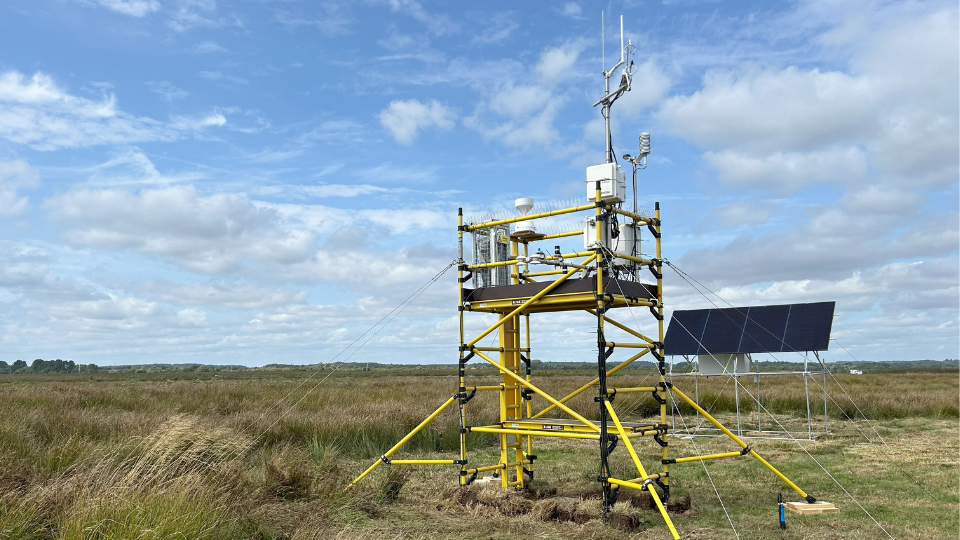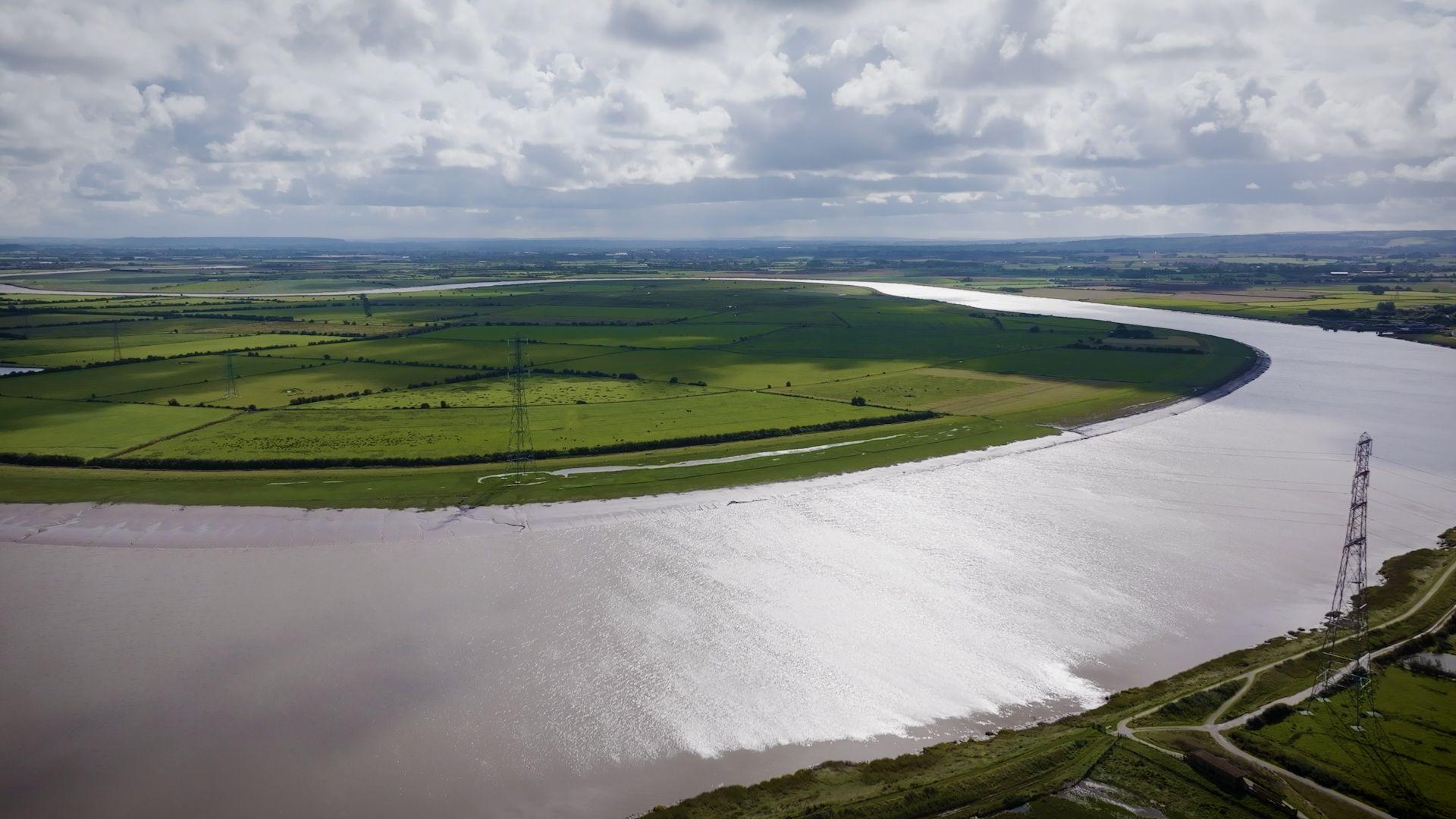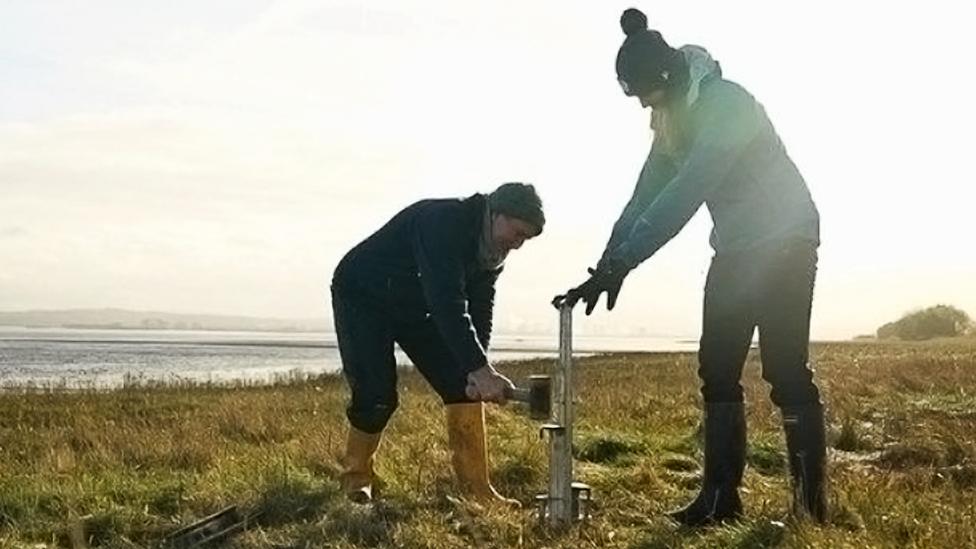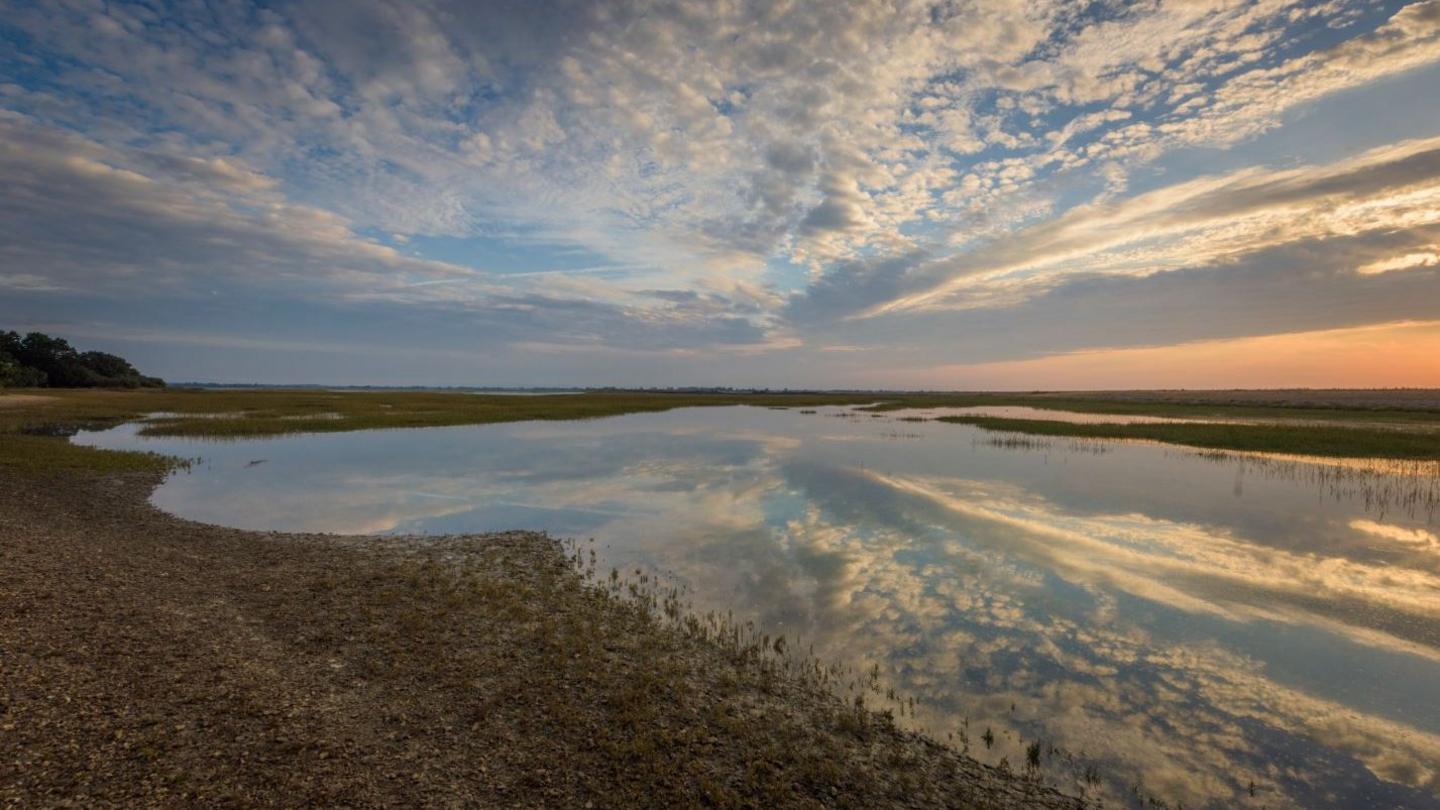Monitoring tower to solve salt marsh carbon mystery

The new flux tower at Arne Moor will track how much carbon becomes locked in the new saltmarsh
- Published
A new monitoring equipment has been installed in a bid to find the answer of how newly created salt marshes store carbon.
The structure in Poole Harbour at Arne Moor in Dorset is a flux tower and joins a growing network of towers in saltmarshes across England, such as the one on the Blackwater Estuary in Essex.
It will be the first to monitor what happens to carbon within a habitat as it changes from dry land to a salty wet intertidal habitat.
Dr Ben Green, senior advisor at the Environment Agency (EA), called it "the latest piece in the puzzle".
Flux towers provide a measure of how much carbon dioxide has been taken up by a coastal ecosystem and how it changes over time.
The EA said that salt marshes "are not just credited with being excellent carbon sponges", but also as "habitat for wildlife and protect people and property from flooding".
However, it added that the area of salt marsh in England had been in decline "with up to 85% of it lost since the mid 19th century".
“This is a perfect opportunity for us to chart the benefits of a new salt marsh from its creation," Dr Green said.
Peter Robertson, senior site manager at RSPB Arne nature reserve on the banks of Poole Harbour, called UK salt marshes "globally important for wildlife".
"But they are also vital for our way of life, whether that’s fishing, protecting communities from flooding or storing carbon," he added.
The EA said that the flux towers would take "continuous measurements of CO2 in the atmosphere" and track how much carbon becomes locked in the new saltmarsh.
The project is a collaboration with the UK Centre for Ecology & Hydrology (UKCEH) and funded by the Department for Environment, Food and Rural Affairs.
Get in touch
Do you have a story BBC Dorset should cover?
You can follow BBC Dorset on Facebook, external, X (Twitter), external, or Instagram, external.
- Published11 September 2024

- Published11 November 2021

- Published12 July 2018
